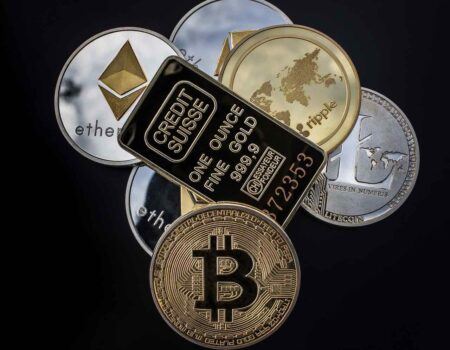On 21 December 2022, Max Branzburg, Vice President of Product at Coinbase, Will Robinson, VP of Engineering at Coinbase, and Greg Tusar, Head of Institutional Product at Coinbase, explained how Coinbase supports Web3.
In a blog post published on 21 December 2022, they wrote:
“We’ve made major investments in Coinbase Wallet because there is no web3 without self-custody. Over the past five years, Coinbase Wallet has been the most downloaded mobile self-custody wallet and dapp browser in the United States…
“NFTs provide an easy way to prove ownership of digital assets. A thriving web3 creator economy depends on NFTs being simple, useful, and widely accessible… Today, Coinbase Wallet users can buy, sell and manage NFT collections and dapps on Ethereum, Polygon Solana and Gnosis Chain. You can also access every major NFT marketplace in the in-app browser, directly view offers on your NFTs, and in the future, accept an offer on your NFTs, all without leaving Coinbase Wallet…
“Coinbase NFT is a web3 marketplace that helps collectors find the best deals from their favorite creators, all with the simplicity, safety and security of Coinbase. Today, you can see Ethereum-based NFTs from LooksRare, OpenSea, and others, alongside listings from Coinbase NFT…
“To build for web3 builders, we made the company-wide mindshift to be API-first. As we innovate and build new web3 technologies and infrastructure, we will also make them available to developers. By providing all-in-one access across every primitive, the goal of Coinbase Cloud is to help web3 developers build a better, more secure, and decentralized internet…
“As institutions have become increasingly familiar with crypto, their investment strategies have evolved to include crypto native activities like staking, governance, NFTs, and DeFi participation… Earlier this year we launched our institutional-grade NFT custody*** solution where clients can store select NFTs in segregated cold wallets.”
In a blog post published on 19 December 2022, Coinbase Co-Founder and CEO Brian Armstrong said that, in the wake of the collapse of crypto exchange FTX, the U.S. and other major jurisdictions needed to take the aforementioned steps to “restore trust”:
- “Create regulatory clarity for centralized actors“
- “Enforce a level playing field“
- “Let innovation happen in decentralized crypto“
With regard to the issue of regulatory clarity, Armstrong stated:
“Perhaps the most complex point that needs clarity is around which crypto assets are commodities and which are securities. The CFTC and SEC have been debating this issue in the U.S. for several years now, but unfortunately they haven’t provided any clarity to the market. At this point, it seems clear that Congress needs to step in and pass legislation. This can be done with an updated version of the Howey test that applies to crypto tokens that may fall under the definition of an investment contract.“
Here’s the Coinbase CEO’s proposal for a modern version of the Howey test that could help determine whether a particular cryptoasset is a commodity or a security:
“Was there an investment of money? If the crypto asset issuer hasn’t sold the asset for money for the purpose of building a project, it’s not a security.
“Is the investment in a common enterprise? For a crypto asset to be a security, it must be controlled and operated by a centralized organization like a company. If a project has become sufficiently decentralized, it’s not a security.
“Is there an expectation of profit? If the primary purpose of the crypto asset is some other form of utility (voting, governance, incentivizing actions of a community, etc) then it is very unlikely to be considered a security.
“Are the profits to be derived primarily from the efforts of others? If the expectation of profit primarily comes from participants who are unaffiliated with the issuance of the asset, then the project is sufficiently decentralized and would not be considered a security.“
He then pointed out that “all four of these prongs need to be satisfied for the asset to be considered a security” and “if you just have a few of them, it’s not enough.”









